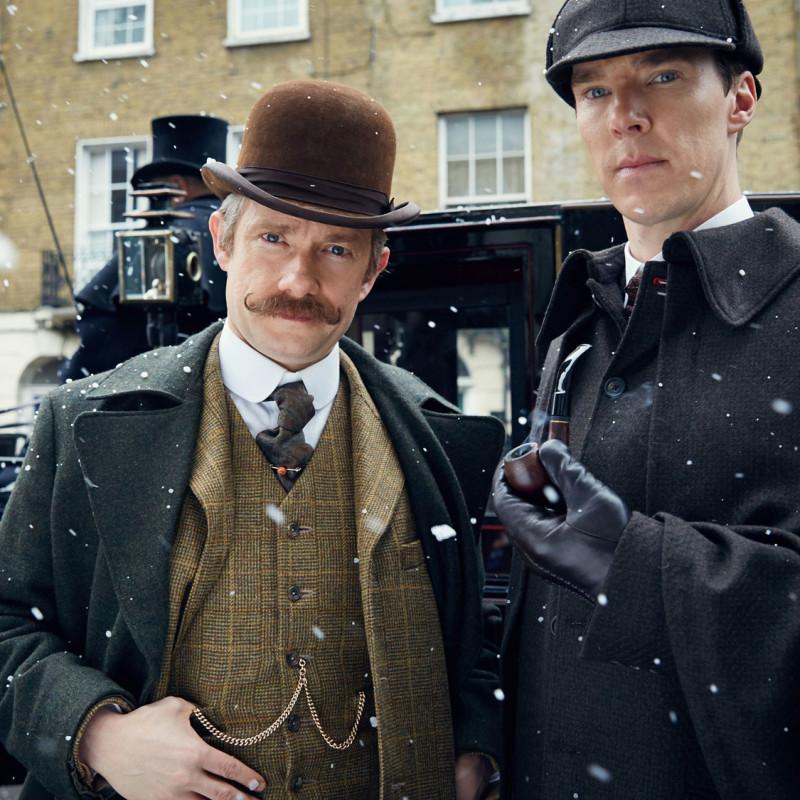‘Sherlock’ series four emotionally taxing, worth the wait
Three years, one special episode and numerous enthralling trailers later, the BBC’s beloved modern adaptation of Sir Arthur Conan Doyle’s classics, “Sherlock,” reared its head with a new season consisting of three gripping and often heart-wrenching episodes. The brand-new fourth series explored aspects of the characters unlike any of the previous episodes, emphasizing their complexity and adding drama by extinguishing any black-and-white notions of the characters.
The first episode of the series titled “The Six Thatchers” rejoined Sherlock Holmes (Benedict Cumberbatch) returning from his short-lived exile after the death of one of his many formidable adversaries and a new threat striking London. Meanwhile, Holmes’ right-hand man John Watson (Martin Freeman) was settled into domestic bliss with his wife Mary (Amanda Abbington) and their newborn daughter.

However, their tranquility was fleeting, as Mary’s dark past, revealed to viewers in series three, came back to haunt her family and their detective companion. The episode as a whole set in place a new tone for the show, abandoning original character archetypes, adhering to the events in Doyle’s novels, especially with Mary’s heartbreaking death, and undoubtedly achieving an impeccable and compelling start to the new series.
Picking up after the events of “The Six Thatchers” was the second episode, “The Lying Detective.” The beginning of this follow-up detailed Holmes’ downward spiral after the distressing events of the previous episode, which both Watson and Holmes blamed on the troubled detective. Audiences were also introduced to public philanthropist and undercover villain Culverton Smith (Toby Jones) and his sinister motives for joining the criminal classes. In the show’s suspenseful style, “The Lying Detective” ended by revealing Holmes’ estranged and deeply troubled sister, Eurus Holmes (Sian Brooke). This plot twist was the show’s creators unique interpretation of Doyle’s reference to an ominous “east wind” in the novel, “His Last Bow.”
This episode was surrounded by a great deal of mystery, and strayed from the common use of dramatic irony by revealing the majority of crucial information to the audience and the protagonists at the same time, therefore allowing the viewers to have a deeper connection to the struggles and emotions of the main characters.
The following episode, “The Final Problem,” was responsible for the culmination of the fourth series. The high stakes of this episode pushed the main characters to psychological extremes, pulling audiences along in suspense. Imprisonment and the characters’ loss of all control put them in a state that viewers were scarcely familiar with, adding to the uncertainty the series finale held throughout its duration.
“The Final Problem” not only answered questions that were keeping fans on the edge of their seats from the previous episode, but also from the first three seasons. A significant portion of the dialogue shared between Holmes and his powerful brother Mycroft (Mark Gatiss) since the beginning of “Sherlock” held obvious relation to their childhood, but the events of the Holmes’ past were vague to audiences until “The Final Problem” revealed what horrors truly lurked in the childhoods of the clever siblings.
The fourth series of “Sherlock” undoubtedly changed viewers’ perception of the characters, giving the show the potential to take itself to uncovered heights in the future. However, for the first time, the series finale did not end on a cliffhanger to keep fans waiting for years in anticipation of the next season, making audiences question what the prospective return of “Sherlock” will hold. Regardless of what the future holds for the captivating show, audiences will eagerly await the day when they can once again delve into the world of the reclusive detective on Baker Street.


